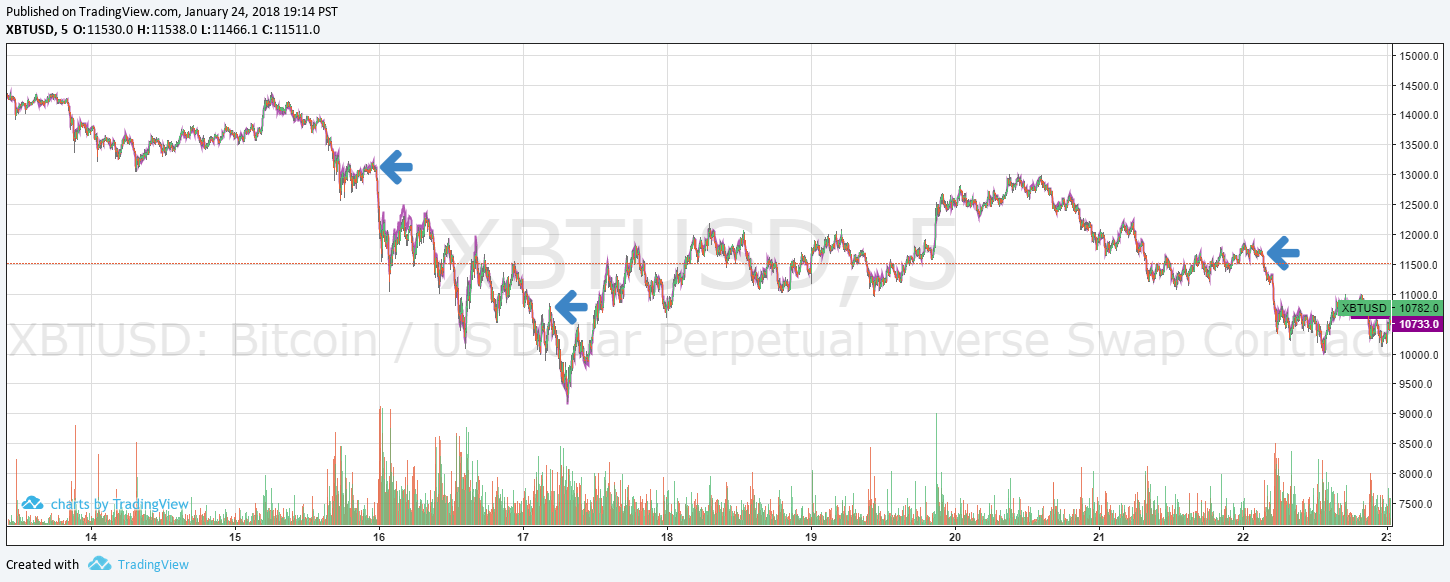The old hands in trading Bitcoin were not surprised when January saw a sharp correction in Bitcoin.
On January 1st, the price was $13,621 USD. Today it stands at $11,700. On the Asian markets, Bitcoin did even worse dropping briefly below $10,000 before recovering to just over $11,000.
Why is it not a surprise? For three of the last four years, the price of Bitcoin has dropped in January and recovered in February.

The exception is year 2014 and guess what happened that year? That was the year of Mt. Gox, the biggest hack of a Bitcoin exchange in history.
On February 17th, 2014, withdrawals were halted at the biggest Bitcoin exchange in the world and by the end of the month, the Bitcoin ecosystem entered a nuclear winter with the price 60% year over year.
Since then the charts tell the same story: Bitcoin goes down in January, goes up in February, goes up year-over-year.
Late January/early February is the beginning of Chinese New Year, so you have the Asian version of the North America saying, “Sell in May and go away.”
It’s not just the Chinese either, many Asian cultures celebrate the Lunar New Year or spring festival including Indonesia, Malaysia, Thailand, and Vietnam,
Because the official start date of the Lunar New Year varies from year-to-year, I encourage people to read the Wikipedia article on the subject.
Of course, there are other reasons for the slump in the price of Bitcoin since late December.
It has become obvious that once the Chinese bitcoin exchanges were shut down in October (a causing a 30% drop in price), many Chinese just moved to the South Korean exchanges which allowed for anonymous accounts to trade Bitcoin.
But in January, South Korean regulator began to insist that crypto-exchanges follow standard know-your-customer (KYC) regulations and so many Chinese investor had to move their bitcoin, and move it very quickly.
If you look at the chart of Bitcoin price drops in January, it was obvious that there was heavy selling from Asia:

This chart is from Bitmex, the largest Bitcoin futures exchanges in the world. Not coincidentally, Bitmex isbased in Hong Kong. Over the last ten days, there were three sudden drops in the price of Bitcoin: January 15, 11:35pm, January 16th 10:30 pm, January 22 3:45 am, Pacific Standard Time.
The time of the drops if you are trading from New York? 2:35 am, 1:30 am and 6:45 am.
Time from Hong Kong? 3:35 pm, 2:30 pm, and 7:45 pm.
If you think that’s a coincidence I encourage you to do your own research and check the Bitcoin “drops” over the last six weeks. Virtually every one of the drops has occurred when New York is sleeping (or at the very least, having a cocktail at the local nightclub) and Hong Kong is wide awake.
Conclusion
There were three factors that led to Bitcoin’s gut-wrenching correction in late December and January: the usual Chinese New Year hiatus, a crack-down on money laundering in South Korea, and the freeze-up of Bitcoin exchanges in December as they struggled to implement KYC (know-your-customer) regulations in their quest for legitimacy.
Chinese New Year starts on February 16th in 2018 and goes on for seven days (it’s a late start this year).
South Korean exchanges before the crackdown traded as high as ten percent more than US price for Bitcoin. Now it’s at parity.
And finally, crypto-exchanges around the world are opening their doors again after Christmas, when most if not all of them refused to open new accounts.
(Note, if you are Canadian and looking for a crypto-exchange, I recommend Coinsquare.io. They have gone on a massive hiring binge lately and claim to have a staff of more than 55 people).
Ross
